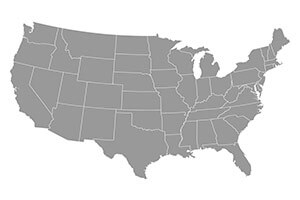
All beekeeping is local — where both forage and weather are concerned. California’s drought continues, much of the Midwest has been inundated with late-spring rain, and the rest of the country is somewhere between.
Northeast
Western Pennsylvania reports lower-than average spring rainfall, while the central and eastern regions report wetter conditions. Retail sales are strong, with an emphasis on local honey.
New York’s moisture levels were not bad this spring. Black locust and clover were good early producers, and the outlook looks good for the near future.
Maine’s 2020 losses were high, due to a very dry year, the resulting lack of pollen, and mites. The state’s retail sales are still good, with “raw” honey and glass jars among the better selling points. The wholesale market is fair.
Mideast
Rain has been plentiful in Virginia thus far, spurring hopes for another great honey production year. Black locust, blackberry and tulip poplar have been early contributors. Demand for nucs this spring was also strong.
Southeastern Kentucky saw its first tulip poplar flow in five years, reminding our reporter of the long-running flows of two decades ago. Autumn olive has also been a good producer.
Rainfall has been plentiful in eastern Tennessee, boosting tulip poplar and clover in the early going.
Southeast
In Alabama the clover crop has been good, compared with average mimosa and sumac flows. Facebook sales have helped to tap high consumer retail demand.
Florida has seen a mostly normal weather pattern. Wildflower nectar was about average, with gallberry a little below average.
Southwest
Louisiana’s spring weather has been mostly conducive to beekeeping. The tallow flow was strong, and prospects for the rest of the season look good.
Texas wintering losses were not bad considering the late-winter freeze — in part because many colonies were already in California. Clover and other early-spring crops were late but productive, and wet weather in April and May helped to sustain the early flows. All the farmers markets are back up and running — great news for retail sellers.
East Central
A long-time eastern Illinois reporter remarks that he has never seen more females keeping bees — a wonderful development. The state’s honey prospects look good, with an above-average black locust flow and, so far, good clover and linden production.
Indiana expects a good honey season, with plenty of moisture available thus far to make the clover and other crops productive.
In Michigan, autumn olive produced well this spring, but rainfall has been lacking and the outlook is not good for the remainder of the season. Retail demand remains strong for what honey can be produced.
West Central
The early Kansas nectars were plentiful due to timely rains, with a strong wildflower flow especially in the eastern part of the state. But a cool, rainy spell caused sporadic nectar production in May and early June, and the alfalfa and clover crops have been average. The continued influx of new hobbyists has led many established beekeepers to concentrate on selling bees rather than making honey. Wholesale markets are still being impacted by cheap foreign honey.
South Dakota has mostly seen adequate rainfall, while North Dakota has been drier. The extended forecast for both states is hot and dry.
Missouri weather has been spotty. Most of the state saw a cooler-than-average spring, though with adequate rainfall early on. The black locust flow was better than average, and many beekeepers in eastern Missouri (and southern Illinois) are reporting a large crop of dark honey that is almost never seen this time of year; some suggest sumac, others tulip poplar, but it’s mild and delicious — described by some as fruity with molasses undertones — and most are happy to have it. In late June, an extended but spotty storm front dropped large quantities of rain on some areas while mostly missing others. The clover crop has been good, when and where bees are able to work it, but the hit-and-miss ground moisture may result in hit-and-miss fall honey crops.
Nebraska’s spring crops have been lower than usual, with alfalfa in particular giving poor results. They could really use some rain.
Intermountain
Colorado has been cool and wet in the east, and very dry to the west. Where moisture was adequate, wildflowers and fruit trees provided good forage in the early going.
Nevada’s alfalfa crop was just average, with below-average spring rains.
West
Rainfall has been adequate in much of Washington. The early maple flow was good, and a nice blackberry crop was anticipated. Retail demand remains consistent following the COVID-related upswing.
Dry conditions in Southern Oregon have resulted in t.


